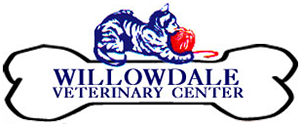Library
-
Acupuncture is one aspect of Traditional Chinese Veterinary Medicine (TCVM) that focuses on restoring the energy balance in the body to promote healing. The technique requires the insertion of fine needles into the dog's body at specified points, called acupuncture points, where nerves and blood vessels converge. It is often used to treat dogs with arthritis and joint inflammation and may reduce the amount of medication a dog needs for these conditions. This handout explains how the treatment works and what to expect when your pet sees a veterinary acupuncturist.
-
An aortic thromboembolism (ATE) results when a blood clot is dislodged and travels through the aorta, becoming lodged in a distant location. This clot causes severely reduced blood flow to the tissues receiving blood from that section of the aorta, leading to decreased oxygen in the tissues. A heart condition called hypertrophic cardiomyopathy is the most common cause. This article outlines clinical signs, treatment, monitoring, and prognosis for cats with this condition.
-
Topical ear medications are necessary to treat most ear conditions. This article provides step-by-step instructions on how to apply ear medications along with precautions.
-
Topical ear medications are necessary to treat most ear conditions. This article provides step-by-step instructions on how to apply ear medications along with precautions.
-
The proper administration of eye medication is essential for your pet's prompt recovery. Make sure you carefully read the label and understand the prescription instructions. If you have any questions, contact your veterinarian for clarification.
-
The proper administration of eye medications is essential for your pet's prompt recovery. Make sure you carefully read the label and understand the prescription instructions. If you have any questions, contact your veterinarian for clarification.
-
This handout discusses arthroscopy, the insertion of a telescope-like camera into a joint. The joints commonly examined and treated using this technique, along with the benefits and risks of this procedure, are outlined.
-
If your cat has been diagnosed with feline asthma, it is important that you follow the treatment instructions that have been determined specifically for your cat. This handout is to be filled in by your veterinary team.
-
Bandages and splints protect an injured or wounded area of the body. It is important to closely monitor your cat's bandage or splint. This handout explains optimal bandage and splint care for your cat at home as well as possible complications that require veterinary attention.
-
Bandages and splints protect an injured or wounded area of the body. It is important to closely monitor your dog's bandage or splint. This handout explains optimal bandage and splint care for your dog at home and possible complications that require veterinary attention.
